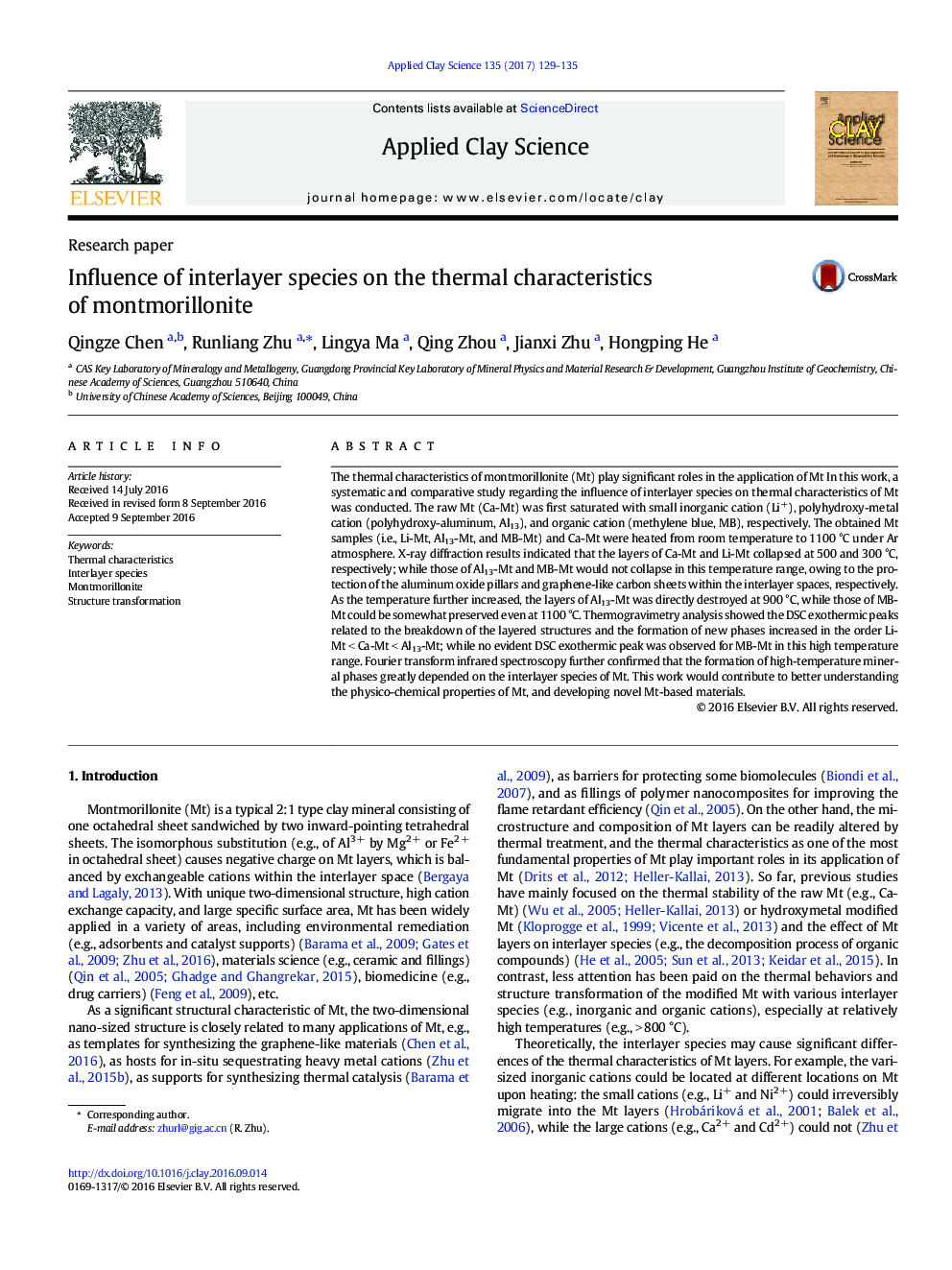| Article ID | Journal | Published Year | Pages | File Type |
|---|---|---|---|---|
| 5468963 | Applied Clay Science | 2017 | 7 Pages |
Abstract
The thermal characteristics of montmorillonite (Mt) play significant roles in the application of Mt In this work, a systematic and comparative study regarding the influence of interlayer species on thermal characteristics of Mt was conducted. The raw Mt (Ca-Mt) was first saturated with small inorganic cation (Li+), polyhydroxy-metal cation (polyhydroxy-aluminum, Al13), and organic cation (methylene blue, MB), respectively. The obtained Mt samples (i.e., Li-Mt, Al13-Mt, and MB-Mt) and Ca-Mt were heated from room temperature to 1100 °C under Ar atmosphere. X-ray diffraction results indicated that the layers of Ca-Mt and Li-Mt collapsed at 500 and 300 °C, respectively; while those of Al13-Mt and MB-Mt would not collapse in this temperature range, owing to the protection of the aluminum oxide pillars and graphene-like carbon sheets within the interlayer spaces, respectively. As the temperature further increased, the layers of Al13-Mt was directly destroyed at 900 °C, while those of MB-Mt could be somewhat preserved even at 1100 °C. Thermogravimetry analysis showed the DSC exothermic peaks related to the breakdown of the layered structures and the formation of new phases increased in the order Li-Mt < Ca-Mt < Al13-Mt; while no evident DSC exothermic peak was observed for MB-Mt in this high temperature range. Fourier transform infrared spectroscopy further confirmed that the formation of high-temperature mineral phases greatly depended on the interlayer species of Mt. This work would contribute to better understanding the physico-chemical properties of Mt, and developing novel Mt-based materials.
Related Topics
Physical Sciences and Engineering
Earth and Planetary Sciences
Geochemistry and Petrology
Authors
Qingze Chen, Runliang Zhu, Lingya Ma, Qing Zhou, Jianxi Zhu, Hongping He,
